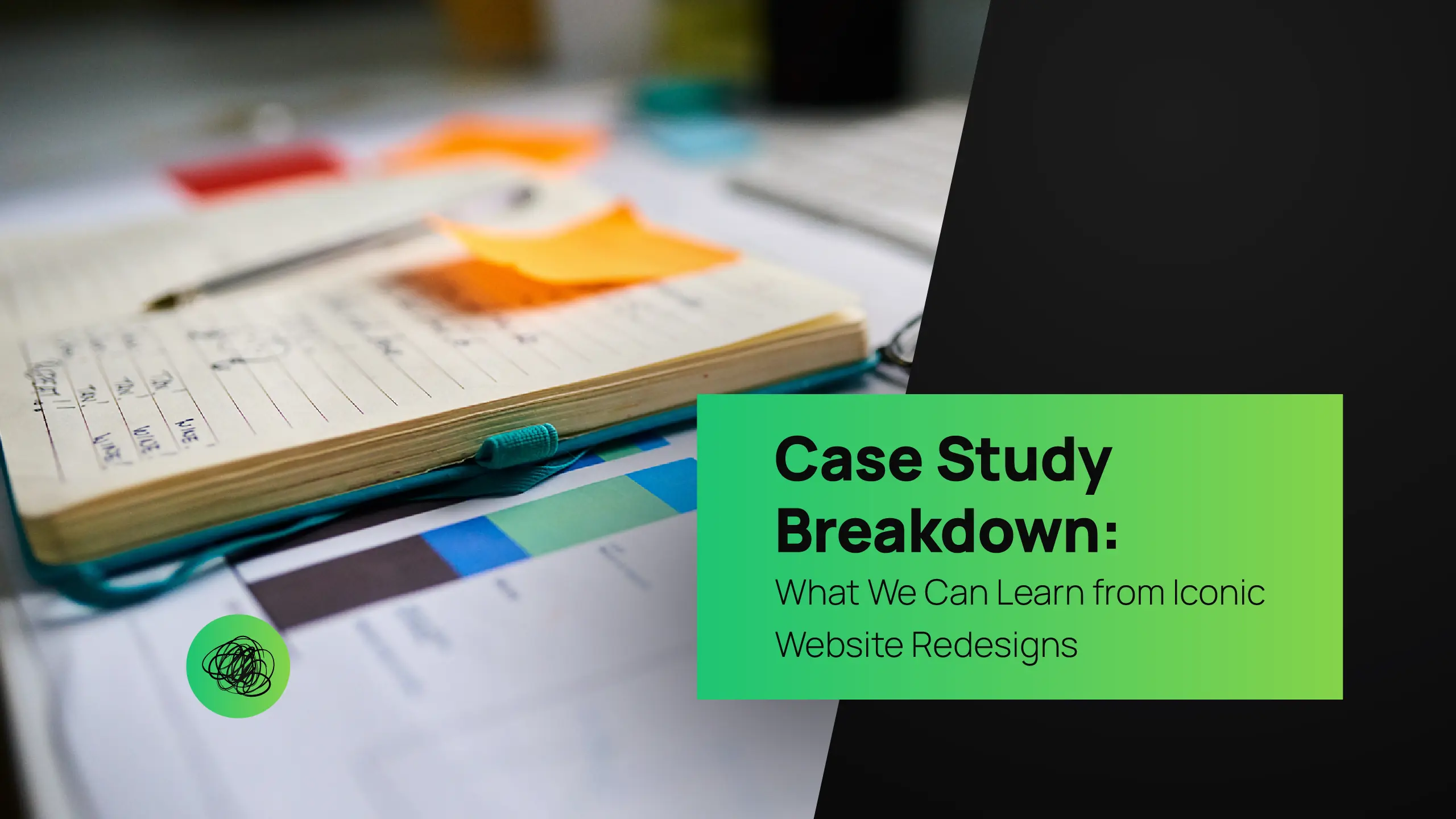If websites had a red-carpet event, a Website Redesign Case Study would be the paparazzi moment—the “before” and “after” shots that make you gasp, applaud, and sometimes wonder why they didn’t do it sooner. Just like movies have remakes, websites too crave a glow-up. Some redesigns flop harder than a 90s sitcom reboot, but others? They become textbook Website Redesign Examples for the ages.
At Thinkster, we live for these stories. They aren’t just digital facelifts—they’re brand therapy sessions, traffic-boosting experiments, and conversion-optimizing makeovers rolled into one. The difference between an okay website redesign and a legendary one is in the details—and today, we’re breaking down the quirky, clever, and sometimes chaotic lessons from Iconic Website Redesigns that turned ordinary sites into unforgettable digital experiences.
Why Website Redesigns Are More Than Pretty Pixels
First, let’s clear the biggest myth: a website redesign isn’t just about making things look trendy. Sure, swapping Helvetica for a bold sans-serif font and adding a splash of neon green might get you nods from design Twitter, but a Successful Website Redesign runs deeper. It’s about function, flow, and giving visitors a digital path paved with “aha!” moments.
Think of it like renovating a house. You don’t just repaint the walls—you fix the plumbing, knock down awkward partitions, and maybe add that rooftop deck where everyone suddenly wants to hang out. Similarly, Website Redesign Best Practices involve aligning aesthetics with performance: faster load times, mobile-first layouts, conversion-friendly CTAs, and brand storytelling that makes users say, “Yep, this brand gets me.”
The Science (and Sass) Behind Successful Website Redesigns

So, what separates meh redesigns from Iconic Website Redesigns? It comes down to three things: empathy, clarity, and guts. Empathy for users who don’t want to click through 17 menus just to find pricing. Clarity that guides users like an airport sign—bold arrows, no confusion. And guts to strip down bloated features that looked good in a boardroom but flop in the real world.
Every Website Redesign Case Study is essentially a lab experiment. The hypothesis? “If we make this cleaner, faster, and easier, conversions will rise.” The experiment? Heatmaps, A/B tests, user interviews. The results? Sometimes traffic doubles, sometimes bounce rates plummet, sometimes you discover people really, really hated that autoplay video on the homepage (sorry, not sorry).
At Thinkster, our redesign philosophy is simple: make it delightful, make it smart, make it work harder than your intern.
Lessons from Iconic Website Redesigns
Now for the juicy part: the Website Redesign Lessons you can actually steal. Across industries—from e-commerce giants to scrappy startups—there are patterns that emerge.
Take Airbnb’s redesign. They ditched clutter, simplified navigation, and doubled down on aspirational photography. Suddenly, people weren’t just booking stays; they were dreaming of lifestyles. That’s not just a Successful Website Redesign—it’s a masterclass in emotional design.
Then there’s Slack. Their redesign didn’t just polish the interface; it clarified their brand voice. They leaned into illustrations and warmth to turn what could be boring enterprise software into a friendly workplace buddy. Users felt not only seen but welcomed.
And let’s not forget the ultimate glow-up: Instagram’s shift from a skeuomorphic camera icon to a sleek gradient logo. The redesign sparked outrage at first (oh, the tweets were wild), but it ultimately modernized their entire digital presence and paved the way for app icon minimalism. Sometimes, the bravest moves trigger the biggest long-term wins.
Every one of these Website Redesign Examples proves that risk and reward are dance partners. Too safe, and you fade into the noise. Too wild, and you risk alienating loyal users. But when the balance is right, you end up with an Iconic Website Redesign that teaches the internet a thing or two.
The Anatomy of a Website Redesign Case Study

Let’s break it down, Thinkster-style. A solid Website Redesign Case Study usually answers four questions:
- Why redesign now? Was the site outdated, underperforming, or sending users into rage-click spirals?
- What changed? Fonts, layouts, navigation, messaging, CTAs, user flows.
- What tools and strategy fueled it? Analytics, UX research, content refreshes, CRO.
- What happened after? Increased engagement, improved brand perception, conversions skyrocketing (hopefully).
When these elements are laid bare, you don’t just get a glossy before-and-after snapshot—you get a playbook. And at Thinkster, we love turning those playbooks into strategy fuel for brands that are itching to evolve.
Website Redesign Best Practices You Can Steal
If you’re reading this and wondering, “Okay, but how do I not screw up my redesign?”—relax, Thinkster’s got you. Here are some Website Redesign Best Practices woven into every legendary case study we’ve studied, critiqued, and occasionally obsessed over:
- Start with user research, not design software. If you don’t know what frustrates your users, no amount of gradient buttons will save you.
- Prioritize speed and mobile. In 2025, if your site takes longer than a samosa order to load, users bounce.
- Keep navigation intuitive. Nobody enjoys digital hide-and-seek.
- Update your content along with design. A sleek site with stale copy is like a Ferrari with a scooter engine.
- Measure everything. Traffic, heatmaps, scroll depth, conversions—because vibes don’t pay the bills.
These lessons pop up again and again in Website Redesign Case Studies, proving that success isn’t about luck; it’s about process.
When Website Redesigns Go Wrong (Yes, It Happens)

Of course, not every makeover deserves applause. Some flops become cautionary tales. Remember Digg’s infamous redesign that alienated its core users? They went from internet darling to “what ever happened to them?” faster than you could hit refresh.
Bad redesigns often stem from ignoring users, chasing trends too hard, or forgetting the brand’s DNA. That’s why every Thinkster-led project includes not just fresh design, but guardrails that keep your essence intact. The goal isn’t to look like everyone else—it’s to look like the best version of you.
Thinkster’s Spin on Website Redesigns
Here’s where we step into the spotlight. At Thinkster, we don’t just design websites—we choreograph digital experiences that dance with your users instead of stepping on their toes. We treat every project as a live Website Redesign Case Study, complete with strategy, creativity, and a dash of quirk.
Whether it’s translating your brand story into an irresistible homepage, streamlining user flows to reduce rage clicks, or baking conversion science into your design, we obsess over the details so you don’t have to. And yes, we’ll even save you from the curse of the autoplay background video.
Our philosophy is simple: make websites that are bold enough to be remembered, but smart enough to deliver results. That’s what Successful Website Redesigns are all about.
The Future of Website Redesigns
Looking ahead, the next wave of Iconic Website Redesigns won’t just be about flashy visuals. AI-driven personalization, accessibility baked into every pixel, and sustainability-conscious design (think lighter websites that use less energy) will define the winners. Tomorrow’s Website Redesign Examples will focus on inclusivity, speed, and storytelling in ways today’s brands are just starting to imagine.
And trust us, Thinkster will be there, decoding those case studies, testing wild ideas, and setting the bar higher for what a website can do. Because digital isn’t slowing down—and neither are we.
Final Word: Your Redesign Could Be the Next Case Study
Every brand dreams of being the subject of an Iconic Website Redesign blog, the kind that gets dissected in design schools and bookmarked by marketing nerds. But here’s the twist: you don’t have to be a global giant to pull it off. Whether you’re a scrappy startup, a scaling SME, or a legacy brand in need of a digital reboot, the principles remain the same.
Start with your users, lean into strategy, embrace bold creativity, and measure the heck out of everything. That’s how you create not just a redesign, but a revolution.
And if you’re ready to make your website the internet’s next obsession? Well, you already know who to call. (Spoiler: it’s Thinkster.)



